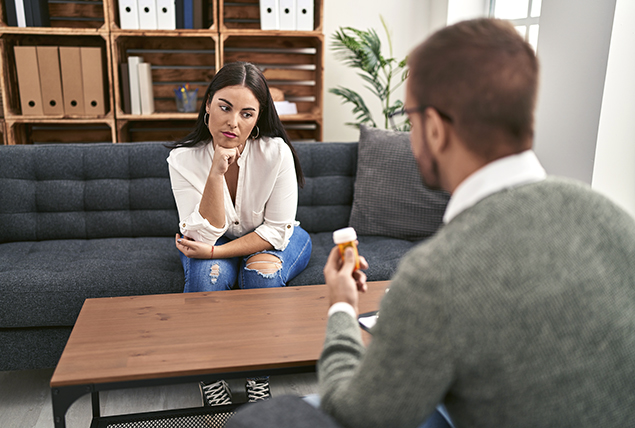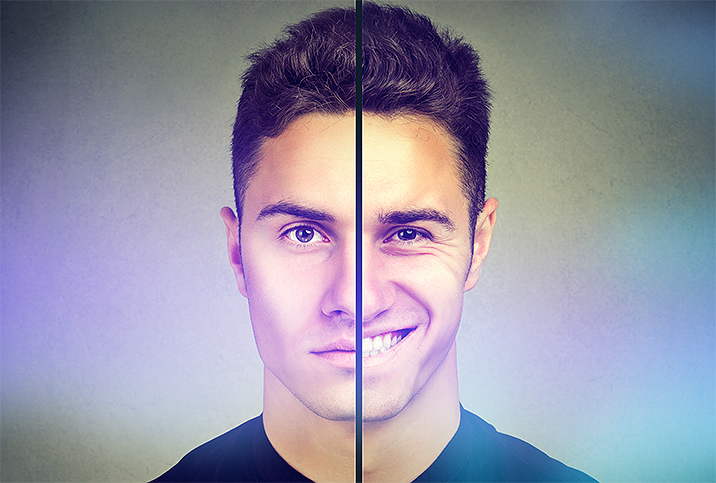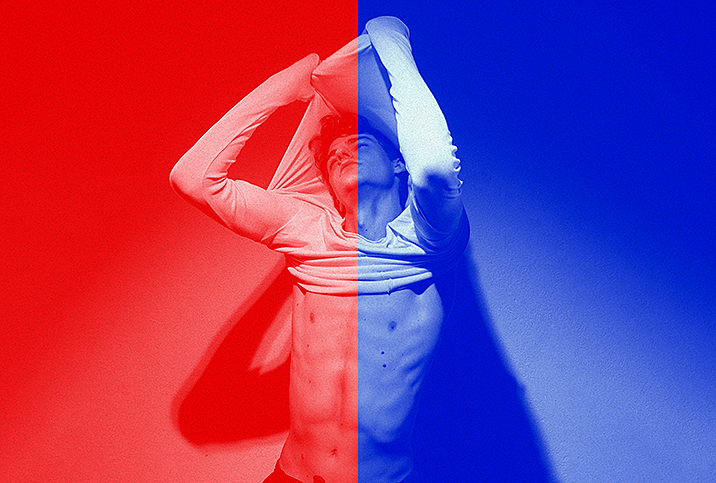Treatment Options and the Side Effects of Bipolar Disorder

Key Points
- Although 2.6 percent of the population in the United States is diagnosed with bipolar disease every year, the actual estimates are higher.
- Annual healthcare costs to treat and manage bipolar disorder can range from about $4,000 to more than $20,000.
- Research indicates between 25 percent and 80 percent of people with manic episodes experience hypersexuality, or the compulsive and excessive need for sexual gratification.
The triggers for bipolar disorder may vary, but there is treatment available. The treatment of bipolar disorder includes medication and psychosocial therapy.
The main goal of this combined treatment plan is to help control the symptoms of bipolar disorder, such as mood changes and energy shifts.
Pharmacological therapy
People with bipolar disorder may receive a combination of different medications. These pharmacologic therapies may include a combination of mood stabilizers, antipsychotics and antidepressants.
Mood stabilizers
These medications aid in reducing disproportionate mood swings. Mood stabilizers can help people living with bipolar disorder participate more fully in their personal relationships and professional activities.
Lithium continues to be one of the first-line drugs to help treat this mood disorder.
"Lithium is a medication used for more than 50 years for the treatment of bipolar disorder, and is highly effective for the treatment of manic episodes and prevention of relapses," said José Francisco Cepeda Torres, psychiatrist and professor at the Alexander von Humboldt University of Armenia in Colombia.
Other treatment options may include:
- Valproic acid (VPA)
- Divalproex sodium
- Carbamazepine
- Lamotrigine
Like any treatment, these drugs carry benefits and sometimes some risks. Cepeda Torres noted the administration of these drugs may or may not generate adverse effects in patients. Side effects usually diminish over time.
"The most common side effects of lithium are nausea, diarrhea, the sensation of a dry mouth or metallic taste, thirst, slight hand tremor, feeling tired or drowsy and weight gain," Cepeda Torres said.
Antipsychotics
As their name suggests, antipsychotic drugs are used to help control psychotic symptoms. These symptoms include hallucinations or delusions which may appear during acute mania or severe depression.
"More recently, newer antipsychotics—also called atypicals—have come on the market that not only have a lower risk of adverse effects compared to the antipsychotics of yesteryear but have also been shown to be effective for treatment as monotherapy [using only one drug]," Cepeda Torres said. "These include risperidone, olanzapine, uetiapine and aripirazole, among others."
Some adverse effects include blurred vision, increased appetite and weight gain, muscle spasms, drowsiness, metabolic problems (such as dyslipidemia), risk of diabetes and heart problems.
Your healthcare professional will determine the proper medication and dosage to help stabilize your mood and keep side effects to a minimum.
Antidepressants
Deciding whether to use antidepressants or not for bipolar illness remains a controversial issue. Although antidepressants are effective in the short-term treatment of bipolar depression, it has been shown in some patients they may induce or precipitate the transition to a manic episode.
"Antidepressants are not considered part of the first-line treatment in bipolar disorder," Cepeda Torres said. "They are usually used in combination with other medications when the initial treatment has not been sufficiently effective in controlling depressive symptoms."
The most frequent side effects of SSRIs, or selective serotonin reuptake inhibitors, include:
- Nausea
- Insomnia
- Diarrhea
- Agitation
- Loss of libido
"However, the most alarming effect is that the person with depressive symptoms may go on to a manic episode," Cepeda Torres said.
Recommended
- The Facts About Bipolar Disorder: Find out how bipolar disorder affects your sexual health.
- It's 2024 and We're Still Living With COVID-19: New vaccines battle with new variants and, yes, you still need to be vaxed for COVID-19.
- Inherited Risk: What to Know About the BRCA Gene: If you have a mutation passed down by a parent, you may have a higher chance of getting cancer.
Psychosocial therapy
Psychosocial treatment is not intended to replace medication. Therapies, such as psychoeducation, interpersonal and social rhythm therapy, or IPSRT and family-focused therapy, or FFT, add an additional level of support.
Psychoeducation
The premise of psychoeducation is the more patients, their friends and families, are educated about bipolar disorder, the better they can adjust their lifestyle to live with it. This provides bipolar patients and their families with important information about the mood disorder and its treatment.
Psychoeducational intervention contributes mainly to the following, said Juan Manuel Orjuela Rojas, a neuropsychiatrist with a private practice in Bogotá, Colombia:
- Helping patients understand their diagnosis
- Creating awareness about bipolar disorder: causes, symptoms, triggers
- Encouraging compliance with treatment
- Educating about prognosis
- Establishing regular activity and sleep patterns
Interpersonal and social rhythm therapy (IPSRT)
The goal of interpersonal and social rhythm therapy is to reduce disruptions in routines and person-to-person interaction, as these changes can increase the likelihood of hypomania or mania.
IPSRT also teaches healthy coping skills, which can help minimize the impact of stressful life events.
Family-focused therapy (FFT)
This therapy involves the immediate family, and consists of joint psychoeducation sessions on the biological, psychological and social factors that contribute to bipolar disorder.
The family of someone with bipolar disorder will also learn conflict management skills and problem-solving strategies.
Cognitive behavioral therapy (CBT)
A mental health professional helps someone with bipolar disorder detect and replace unhealthy or distorted thoughts and behaviors with cognitive behavioral therapy.
"In CBT, there is a structured way of working and a limited number of sessions is established. Usually, the specialist may recommend between eight or twelve sessions, each of which fulfills a specific objective," Orjuela Rojas said.
Cognitive behavioral therapy can help to:
- Prevent depressive or manic episodes.
- Make it easier to detect prodromal symptoms.
- Modify distorted cognitive contents.
- Improve psychosocial development.
What are the associated costs of bipolar disorder?
Healthcare resources associated with this disorder can include:
- Pharmacological treatment
- Psychotherapeutic intervention
- Outpatient visits
- Hospital admissions
Estimated annual healthcare costs can range from about $4,000 to more than $20,000, depending on the nature of each case.
The overall economic burden of bipolar disorder in the United States is roughly $219 billion, indicated a 2020 report.
Bipolar disorder and sexual health
There are many ways bipolar illness can affect your sexual activities, from hypersexuality to hyposexuality.
Hypersexuality
A manic episode can cause a person with bipolar disorder to experience impulsive, uninhibited and risky sexual behaviors.
Between 25 percent and 80 percent of people with manic episodes experience hypersexuality, suggested a 2016 report. Hypersexuality is the compulsive and excessive need for sexual gratification.
"In states of hypersexuality, the libido increases abnormally, and as a consequence, the subject has drastic changes in his or her usual sexual pattern," Orjuela Rojas said.
Examples of hypersexual behavior, according to Cepeda Torres and Orjuela Rojas, can include:
- Devoting a great deal of time to activities of a sexual nature
- Being open to risky intimate practices
- Having sex with multiple partners (including strangers)
- Having unprotected sex or sex under the influence of psychoactive substances
- Consuming pornography disproportionately
Hyposexuality
Depression, by its very nature, fuels feelings of despondency, inadequacy and worthlessness, which can affect desire and intimacy.
The mood disorder and certain medications sometimes used to treat the disorder can stifle sexual urges and put a damper on libido.
"The depressed person feels sadness, low self-esteem, and sleep and appetite disturbances. They stop enjoying things in life and may experience suicidal thoughts. In this context, it is common for the libido to drop," Orjuela Rojas said.
"In general, when libido decreases, people have fewer sexual thoughts and fantasies, and there is also a reduction in arousal," Orjuela Rojas added.
Symptoms of hyposexuality during a depressive phase include:
- Loss of interest in sex
- Feeling physically unattractive or undesirable
- A disinterest in personal hygiene
What are the complications and related conditions of bipolar disorder?
People with bipolar disorder sometimes possess other psychological conditions, which can include substance use disorders, or SUDs or anxiety disorders.
Substance use disorders (SUDs)
It is estimated 30 percent to 50 percent of patients with bipolar disorder will develop a dependent condition at some point, indicated multiple reports.
The coexistence of both disorders can be a somewhat dangerous combination.
"Typically, patients who have substance use problems do not have good adherence to treatment," Orjuela Rojas said. "They don't follow medical indications and miss appointments, which can aggravate the health condition."
Concurrent substance use is associated with extreme emotional ups and downs, depression, more severe symptoms, violence and increased risk of suicidal behavior.
Anxiety disorders
At least half of people with bipolar disorder will develop an anxiety disorder in their lifetime, such as social phobia, generalized anxiety or panic disorder.
When both disorders coexist, the patient's symptoms worsen, there is greater psychosocial dysfunction and the risk of suicide increases.
Borderline personality disorder (BPD)
Patients with SUDs and anxiety disorders often have markedly impaired functioning and a high risk of premature mortality. These individuals are more prone to substance use and suffer from more depressive episodes.
Because of this dual diagnosis, they often require numerous psychiatric hospitalizations.
The bottom line
Although a bipolar disorder diagnosis can be scary, the right combination of treatment can help stabilize your moods and get your sleep patterns under control. Speak to your healthcare provider to learn more.


















